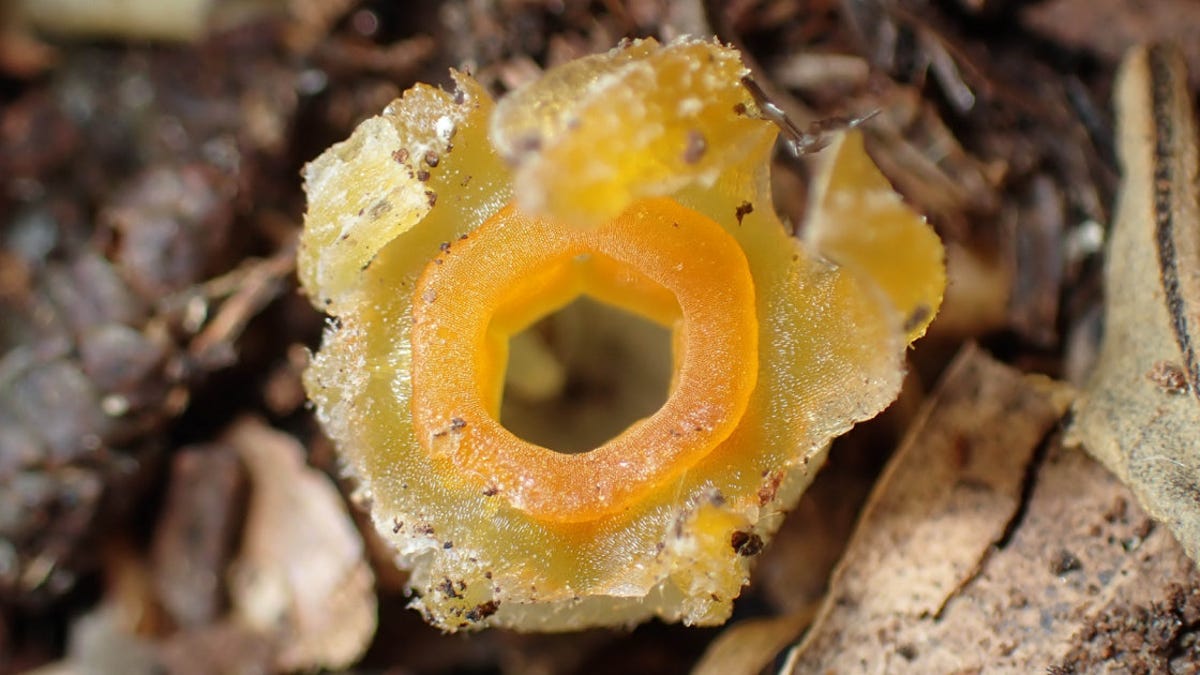'Ethereal' Fairy Lantern Plant Thought to Be Extinct Rediscovered in Japan
The plant is helping botanists better understand a fairy lantern that once grew in the US.

This view of the rediscovered Thismia kobensis shows the flower minus its lobes.
Fairy lanterns laugh in the face of common knowledge about plants. They lack green leaves and don't use photosynthesis. About 90 species of fairy lanterns are known of. One in particular, Thismia kobensis, was thought to be extinct but this "ethereal" plant has been rediscovered after three decades.
Thismia kobensis, like others of its kind, hides out underground with only its delicate flower emerging above the soil. This species was documented in 1992 in Kobe City in Japan. Then the development of an industrial complex appeared to have wiped it off the map. But it's not extinct after all. Scientists have found the plant growing in Sanda City, about 19 miles (30 kilometers) away.
Thismia kobensis is topped with shades orange and yellow.
On Monday, a team of researchers from Kobe University published a study on Thismia kobensis in the journal Phytotaxa. The fairy lantern species was originally known from an incomplete museum specimen, so the team has been able to offer a much more detailed description of the plant for the first time.
The rediscovery of the Japanese plant is also shining a light on a mysterious relative known as Thismia americana.
Thismia americana was found over a hundred years ago near Chicago and was the only known North American fairy lantern. Now presumed extinct, it has left botanists wondering how it got to Illinois in the first place. The new study shows Thismia kobensis is actually the closest relative to Thismia americana.
The connection between "plant species in Eastern Asia and North America having close relationships and disjunct distributions across these regions is not uncommon and can often be attributed to migration through the Beringia land bridge," Kobe University said Monday in a statement.
The Beringia, or Bering, land bridge connected Asia with North America thousands of years ago, creating a path for animals, plants and possibly people.
The research team said further surveys might turn up more specimens of Thismia kobensis. It was found near a trail in a forest, leading to concerns that foot traffic could disturb the rare plant. The study suggests possible conservation measures, such a protections for the forest or for botanic gardens to attempt to propagate the plant.
As for the American version of the fairy lantern, that story may not be over, either. The Field Museum in Chicago created a guide (PDF) to help plant hunters spot the long-missing Thismia americana. Botanists hope it might still be out there somewhere. The rediscovery of its counterpart in Japan is a reason for hope.

